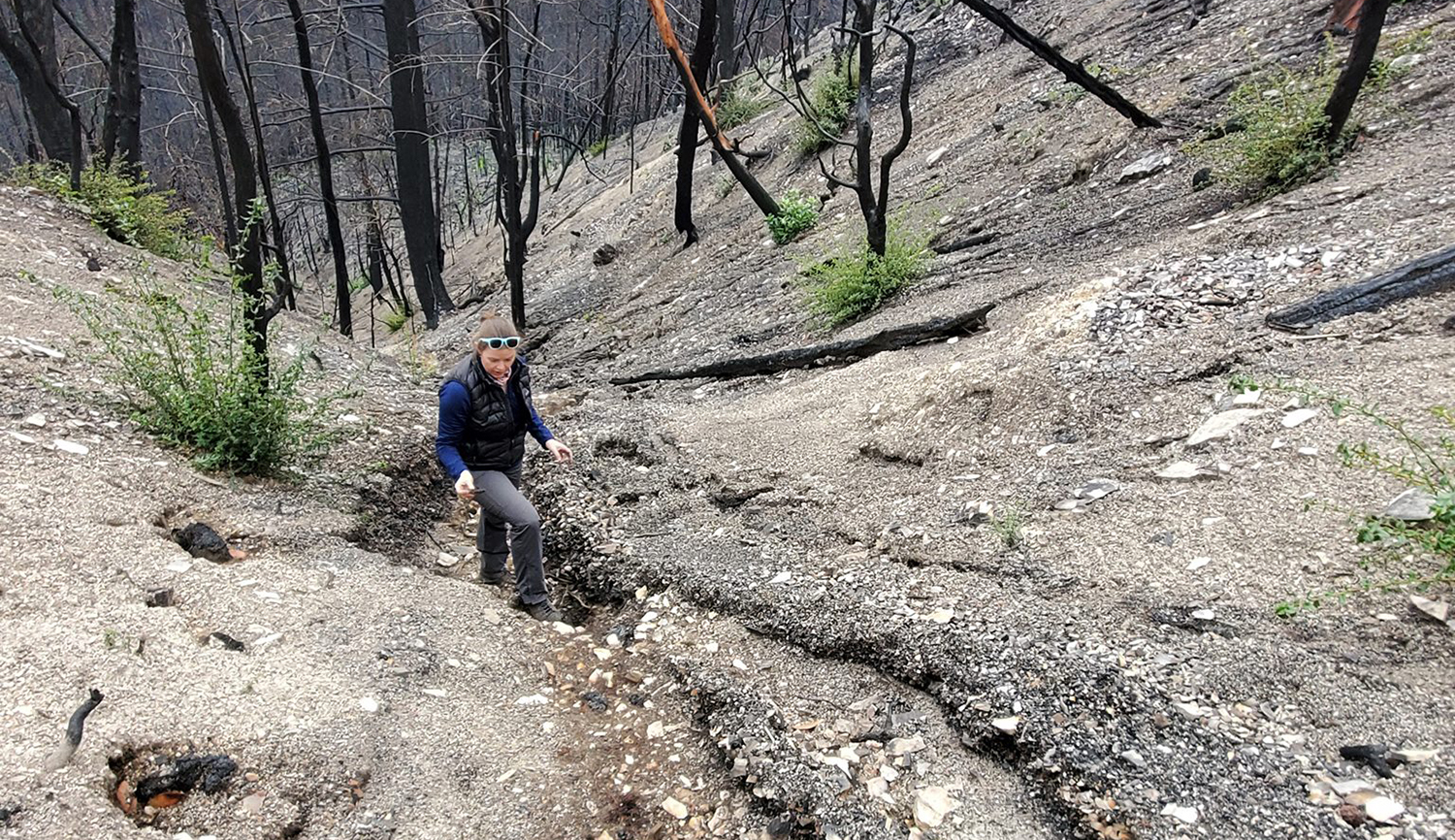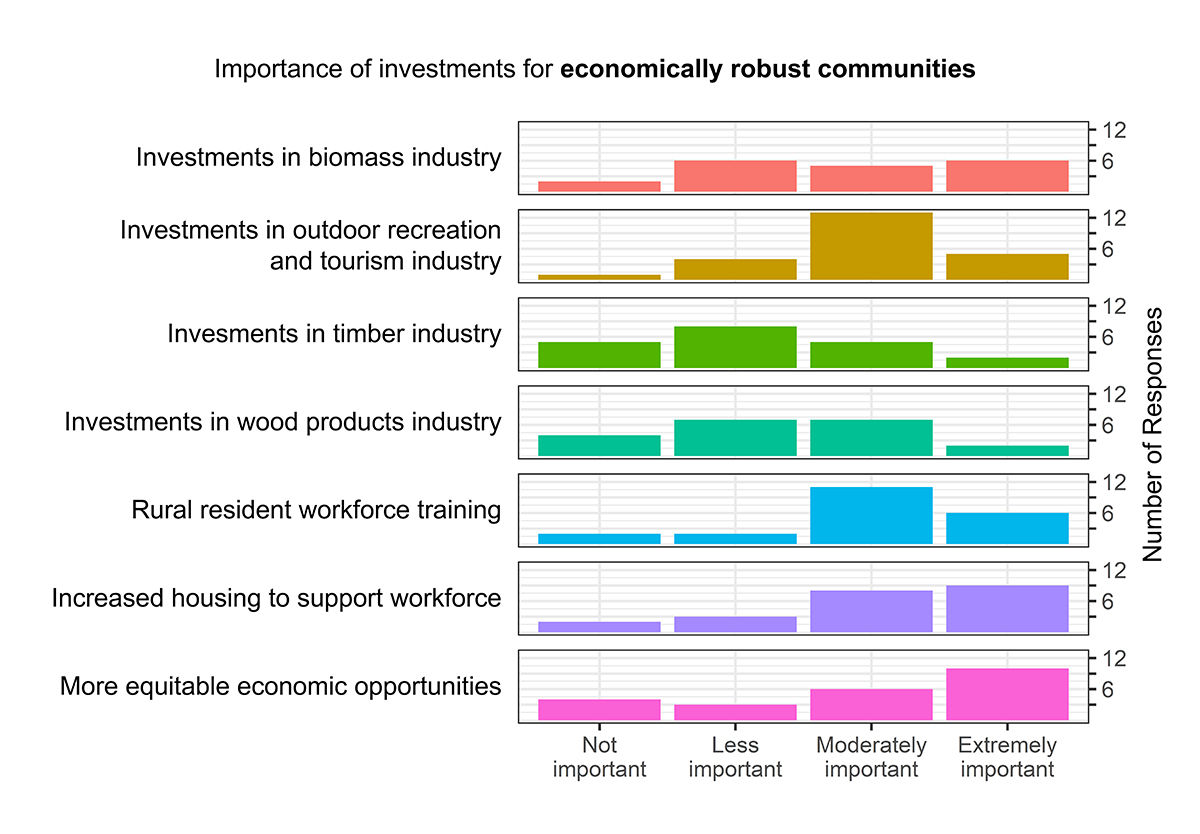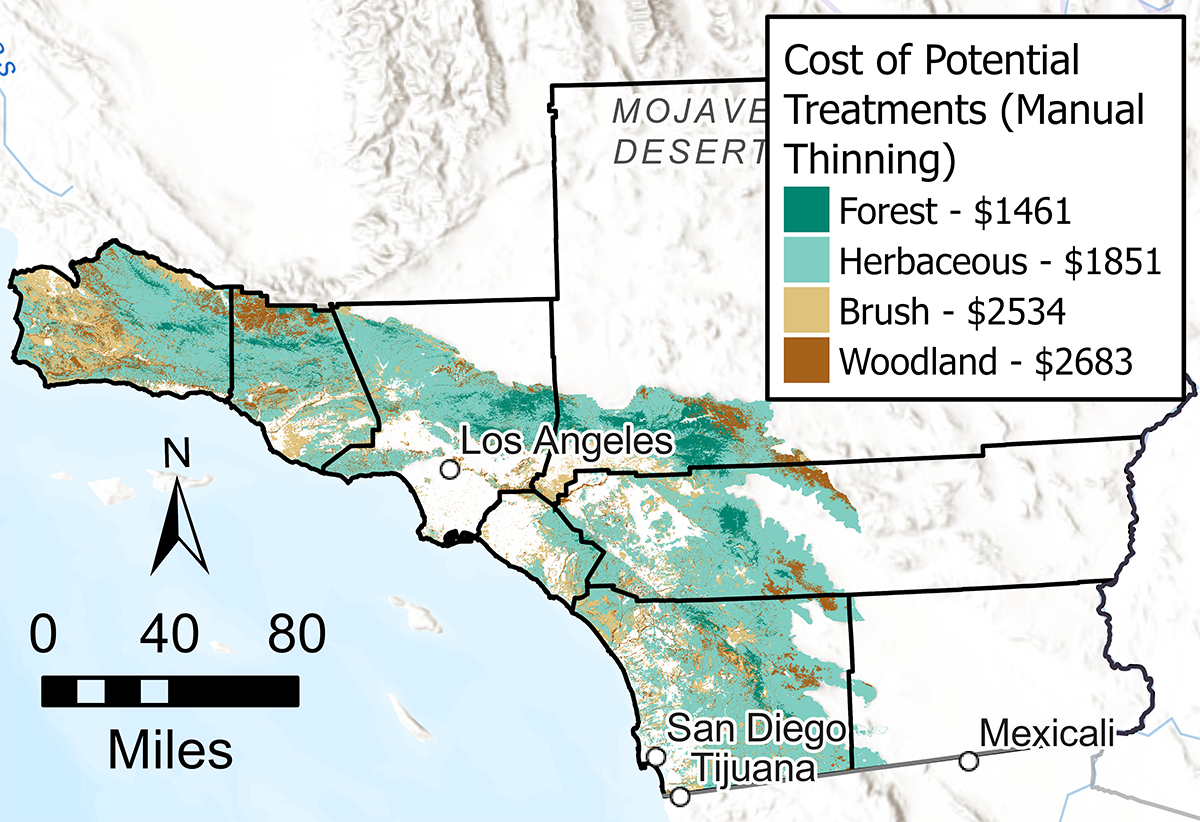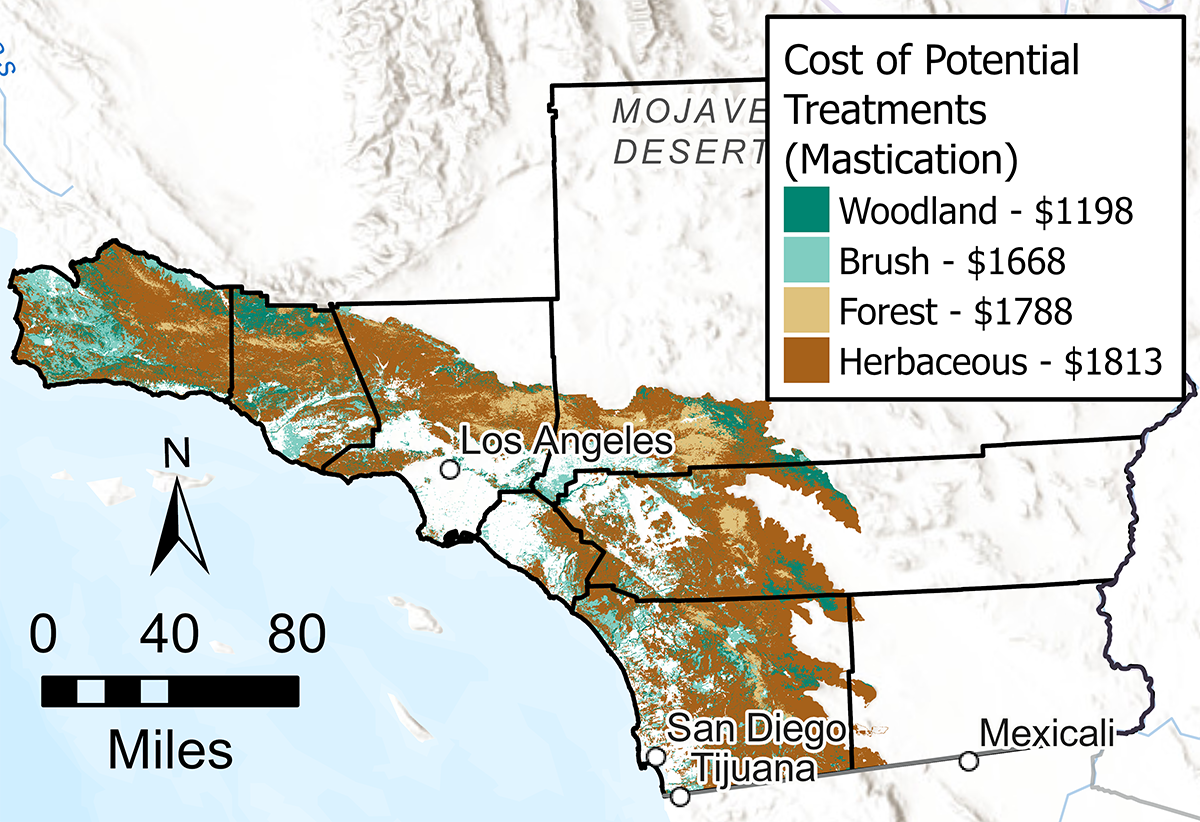Southern California Regional Profile
Economically Robust Communities

Overview
Wildfires pose significant economic impacts; in addition to the incalculable costs associated with lost human lives, wildfire destroys homes and businesses, poses public health threats [see ‘Air Quality’ section], and damages infrastructure. Economic impacts in Southern California can be especially costly relative to other areas because of high-population density and high real estate value.
The economic impacts do not end once a wildfire is declared out. Debris flows following fire increase economic losses and recovery costs [see ‘Water Security’]. The Southern California region is at especially high risk of post-fire debris flows due to the combination of frequent fires stripping vegetation cover, steep topography, high population density, and high-intensity winter rainfall. In the case of the 2018 Montecito incident, debris flows caused Highway 101 to be shut down for nearly two weeks, disrupting business and transportation. In 2021, a section of Highway 1 just south of Big Sur was shut down for nearly 3 months due to post-fire debris flows. Incidents like these may be triggered more frequently in the future if extreme precipitation events increase under climate change.
Fire suppression costs have also escalated in response to the increasing scale and severity of wildfire. Because suppressing fire in ecosystems where it is a natural ecological process increases the probability of larger and higher severity wildfires occurring in the future, there is growing consensus that new investments are needed to increase ecological resilience before ignitions occur. As a result, state and local fire departments are working to increase their capacity to do fuels reduction work, in addition to the important work of protecting communities from dangerous fires.
Other public and private organizations are also contributing to proactive forest management to increase wildfire resilience. For example, recent funds for the US Forest Service include a multi-year multi-million dollar investment into the Southern California Fireshed Risk Reduction Strategy. This Strategy will focus on collaborative ignition reduction projects, proactive vegetation management, and conservation.
One of the greatest barriers to addressing wildfire resilience in California is workforce capacity. Capacity limitations exist at all levels of project development in Southern California, from personnel to help plan and do surveys to develop projects, to availability of crews to implement projects – limitations that will be compounded as pace and scale increases. Recently, there has been increased investment in fire resiliency projects that create new stewardship and economic opportunities, including for communities which were historically excluded or underrepresented in the natural resources management field. In 2022, the Fernandeño Tataviam Band of Mission Indians started the Tiüvac’a’ai Tribal Conservation Corps Program with funding from the Department of Conservation’s Regional Forest and Fire Capacity program and other regional collaborators. This hands-on training program will support Native youth in applying Traditional Ecological Knowledge to increase ecological resilience on ancestral lands while helping to complete US Forest Service priority projects. In Los Angeles, North East Trees, a non-profit organization, is providing stewardship opportunities and job skills training for community members while working to restore native ecosystems and create more green spaces. These initiatives are just two examples of collaborative projects being done in the Southern California region to build economic and community resilience while reducing wildfire hazard.
Stakeholder Perspectives

Most investments for achieving economically robust communities were considered ‘moderately important.’ However, investing in timber industry and wood products industry tended to be rated as ‘less important’, while investments in outdoor recreation and tourism had the strongest consensus as an important investment.
Many interviewees identified implementation capacity and organizational capacity as key barriers to increasing both ecological and community resilience to wildfire. Many organizations, including large federal and state agencies, are trying to pivot to increase the amount of vegetation treatment and other work being done to increase resilience to wildfire. CAL FIRE and US Forest Service have both created more year-round positions to increase capacity to do proactive fuel reduction treatments, but their workforces must balance competing demands from fire suppression. Interviewees also observed that there is less funding available to increase internal organizational capacity to manage projects than there is to hire outside contractors or consultants. There is broad consensus in the Southern California region that funding is needed to reduce human-caused ignitions, increase public engagement, and make the built environment more fire resilient, such as providing homeowner assistance and incentives to do home hardening, but much less funding is available for these types of efforts than vegetation treatment. However, interviewees specifically mentioned new programs, such as the Department of Conservation’s Regional Forest and Fire Capacity program, as helpful for streamlining funding and enabling organizations to tailor projects to their local area.
Resource Conditions


Vegetation treatments are one method to maintain or restore resilience on the landscape. The cost of treatments depends on the type of vegetation, required equipment, and the activities involved. The Regional Resource Kit assessed the cost of potential vegetation treatments by linking estimates of cost per acre for different treatment methods to the vegetation type per unit area. The maps shown here display estimated cost per acre from CAL FIRE for mastication (A) and manual thinning (B). Estimates for additional treatment types and from USFS can also be found in the Regional Resource Kit.
